As I-26 Connector looms, Asheville considers future of downtown's 'western gateway'
ASHEVILLE - His first time driving over the Jeff Bowen Bridge, which crosses the French Broad River into a tangle of interchanges, the confluence of I-26, I-240 and Patton Avenue on the way to downtown, Chris Joyell remembers thinking, "how in the world do people navigate this?"
It seemed like a complete mess to have a local road and two highways all merging on a quarter-mile-long bridge, he said. That was in 2002.
Like many of the people milling in the banquet hall of the Harrah's Cherokee Center Nov. 29, Joyell, once executive director of Asheville Design Center, has been thinking about the project for decades. For some, like him, it was a dedicated focus. For others, it was the omnipresent inevitability of a project that stands to be one of the most consequential in Asheville's history.
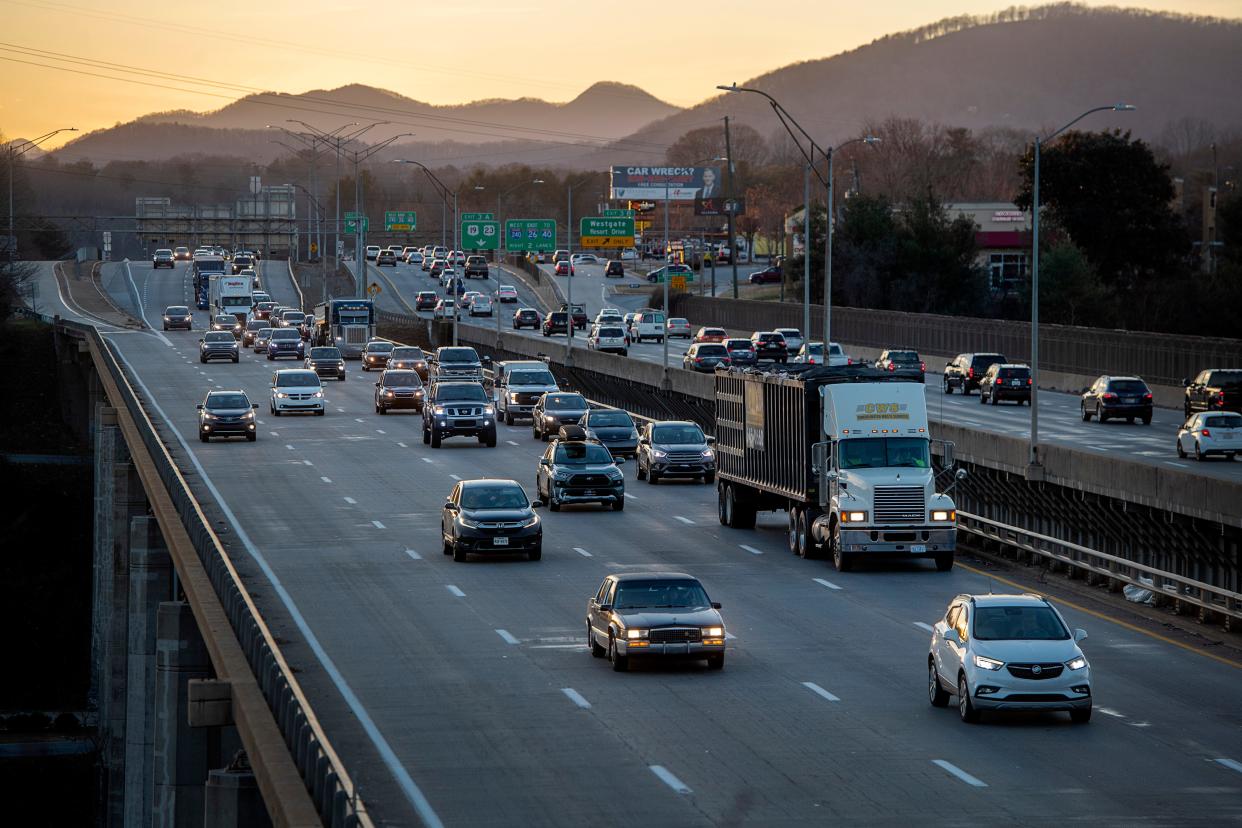
The Interstate-26 Connector project is a $1.3 billion N.C. Department of Transportation project designing a median-divided freeway, accessible only by interchanges, that will connect I-26 in southwest Asheville to U.S. 19/23/70 throughout northwest Asheville.
Of its five sections, one will create a new crossing of the French Broad River, removing a "significant amount of traffic" from the Bowen Bridge and converting the current interchange on Patton Avenue between the bridge and downtown into a new intersection with traffic signals.
From an aerial view, it would untangle a vital entrance to downtown, creating a local roadway connecting drivers, cyclists, pedestrians and others between downtown, West Asheville and the now cut-off Hillcrest neighborhood.
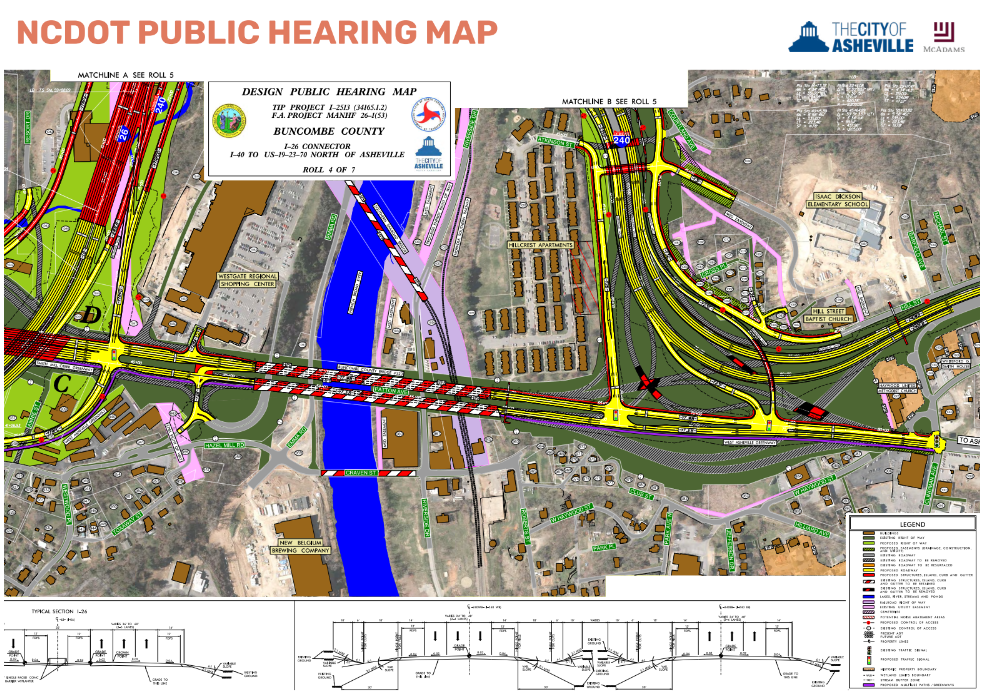
'Setting a vision'
The Nov. 29 open house, hosted by the city, introduced a new planning project for the downtown Patton Avenue corridor. The corridor and feasibility study, led by a $220,000 contract with McAdams, primarily funded with federal dollars, is intended to create a long-term vision for the area of Patton Avenue running from the Bowen Bridge to Pack Square Plaza.
“This is the first step in setting a vision for what needs to happen along this corridor,” said Kristy Carter, senior project manager with Traffic Planning and Design, a civil engineering firm based in Asheville, on the consulting team for McAdams. The study will take about a year and be reviewed regularly by a working group composed of community members, including Joyell.
“It’s not going to be that (same) gridlock that we experience every afternoon,” Carter said of the corridor after the proposed restructuring.
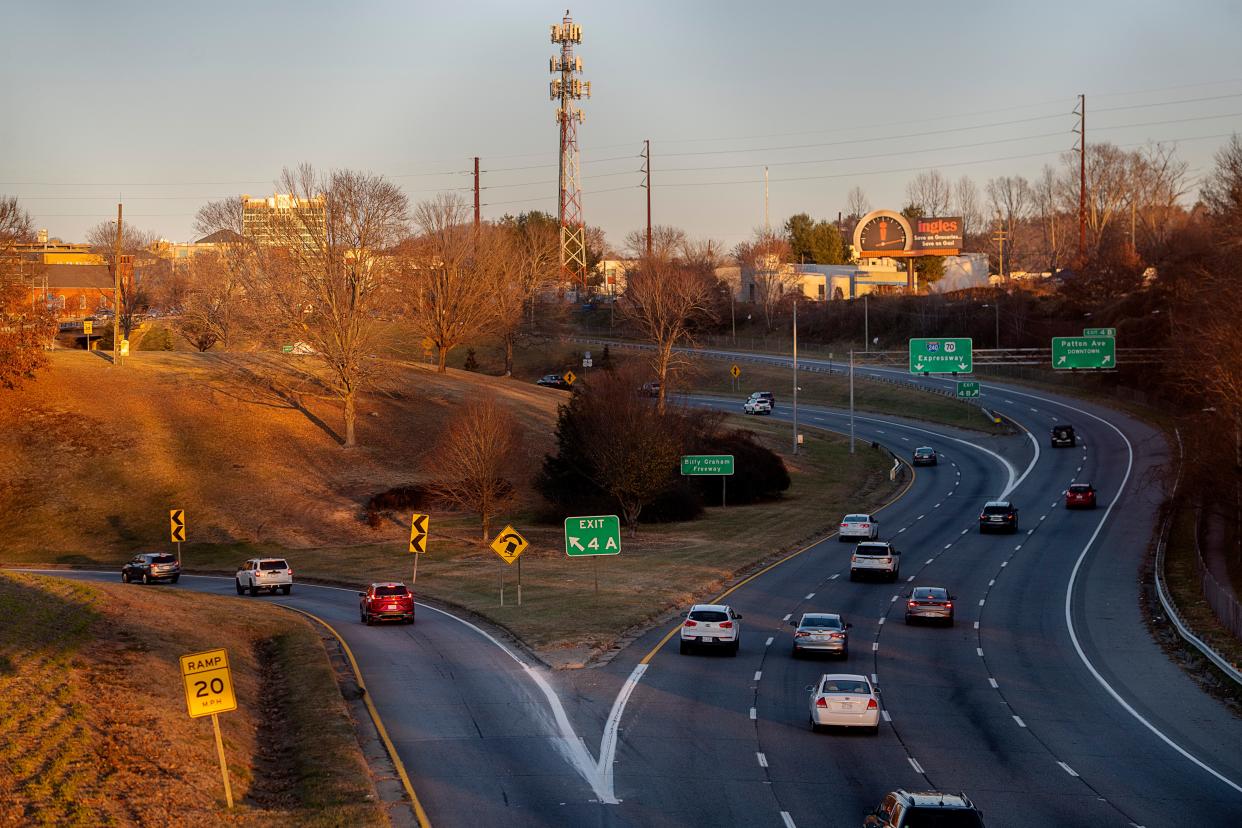
The overarching goal, and a common refrain of the evening, was to create a "western gateway" into downtown, the likes of which doesn't currently exist.
Stephanie Monson Dahl, the city's planning and urban design director, said now visitors and daily commuters are greeted by an Ingles billboard, a lot of empty space and "development you can tell was cut off years ago."
It's not an effective gateway built to the vision of the community, she said. One that announces to people that they have arrived in Asheville: this is who we are.
Pointing at a project area map, the corridor highlighted in blue, Carter said the I-26 project will in part, "clean up" the area. Rather than the current "abrupt entry" into downtown, it will create a straight shot from West Asheville.
“We have this huge, huge opportunity in front of us," Carter said. The study intends to answer, "how do we make the most of it?”
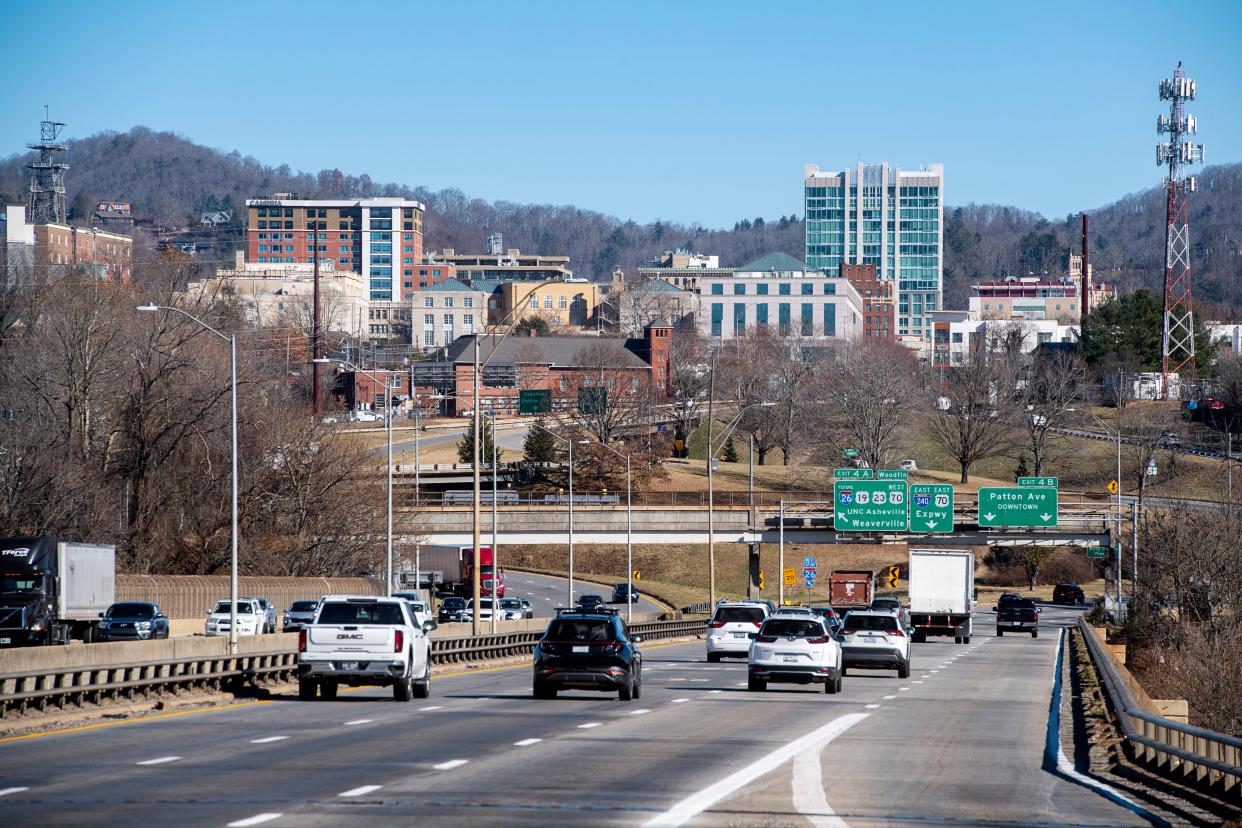
New development?
While the city controls the corridor from Clingman Avenue into downtown, the roadways to the west, and the land surrounding the snarl of highways and interchanges, is NCDOT right of way.
The I-26 Connector project has the potential to convert large right of way tracts into developable parcels that, in time, may be developed and tied into the downtown building fabric, according to a report compiled by the city's urban planner Vaidila Satvika and urban designer David Hazzard.
In other words, as stated in the project's purpose, succinctly printed on a poster board, among the first to greet people as they entered the banquet hall: It could "free up significant amounts of land for new uses, such as housing or commercial development."
But how much excess space there will be — and what happens to it — is still unknown.
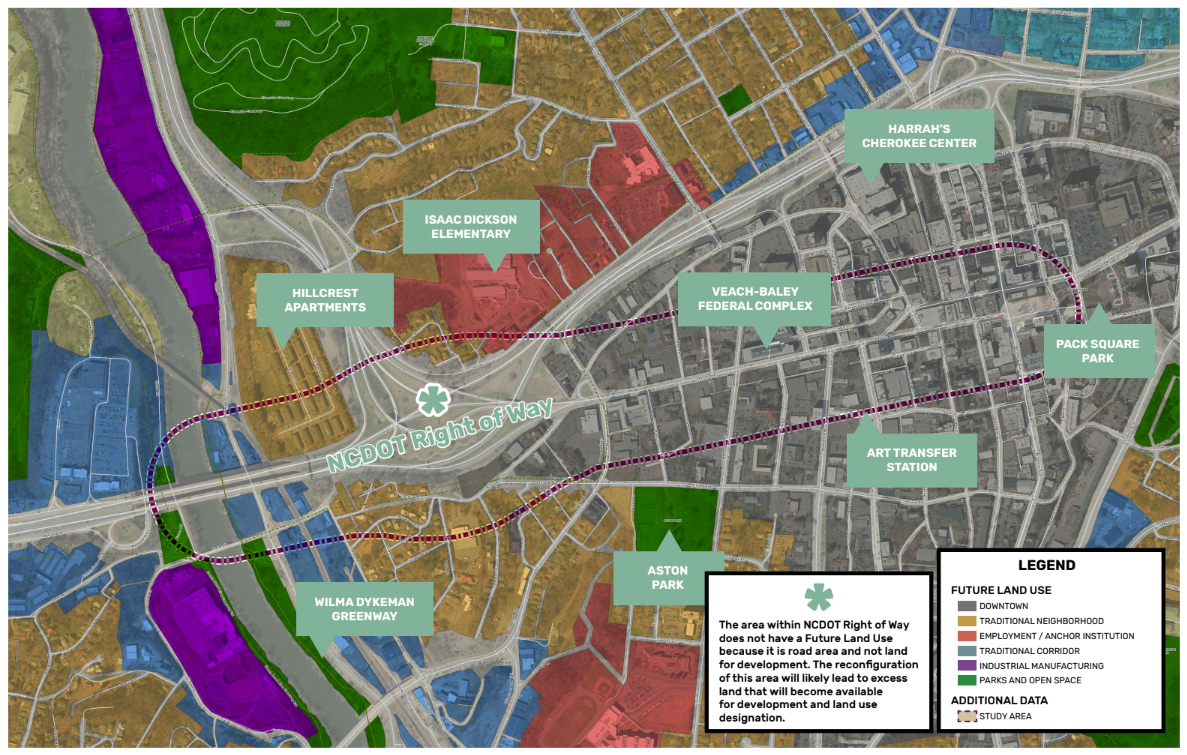
Final design of the I-26 Connector is not complete. The city, its consultants and other stakeholders are awaiting the award of the design-build contract, expected in February. After the announcement, it will take about two years to finish the design before the contractor begins building, said NCDOT spokesperson David Uchiyama.
"As we have been discussing with city staff and officials, the details of what right-of-way will be available, and the process for distributing it, will be determined after the projects are complete," he said by email. "NCDOT will actively look to return unused right of way to the community."
Dahl said part of the study will be preparing for this potential. "That's our role," she said. "be prepared."
As Susan Loftis put it, they've been "planning and re-planning" with the presumption there will be an opportunity to develop any acreage freed by the I-26 Connector. "So we're having to go on faith it will happen."
Loftis has been advocating for changes to the project for eight years, she said, since she first moved to Asheville. Her first impression of the I-26 Connector design, seen nearly a decade ago, was a "big giant disaster."
She remembers saying, "What? Spaghetti Junction is going to be in Asheville?"
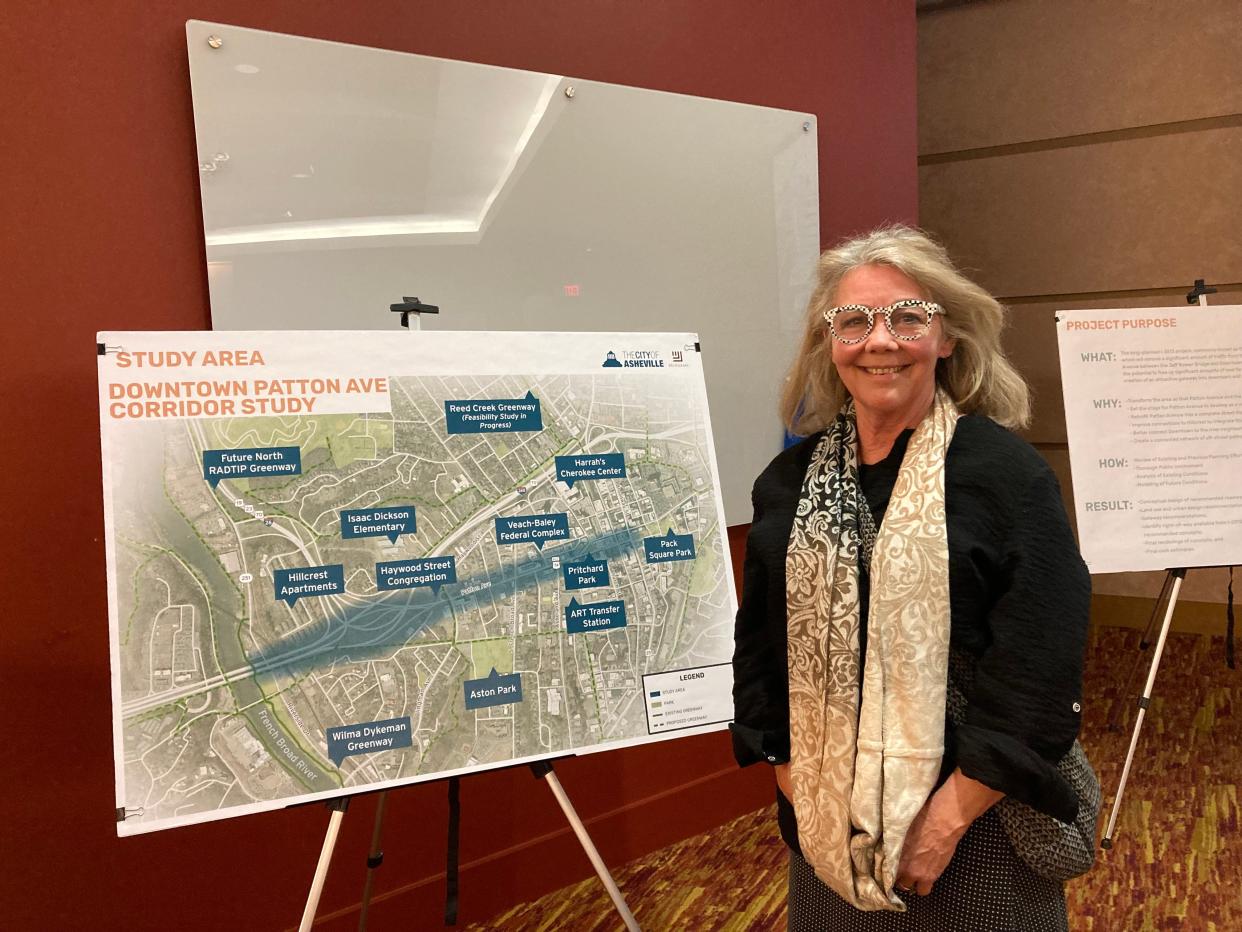
Through work with individuals and local committees, like the I-26 Aesthetic Committee and the city's Multimodal Transportation Committee, she and others are "trying to minimize the negative impact of the project." Among Loftis' specific focuses is advocating for a reduction in design speed.
It needs "drastic, drastic" revision, she said, looking at the conceptual design map.
Transforming Patton Avenue
Earlier this year, Asheville City Council approved $5.8 million to aid aesthetic enhancements for the design-build sections that run through Asheville, like Bowen Bridge, added to the previously budgeted $1.4 million in bicycle and pedestrian improvements in the city's capital improvement plan.
Dahl said the I-26 Connector will mean more local traffic for the corridor, moving interstate traffic elsewhere. "More than a vision," the study will result in specific concepts, developing transportation, land use and urban design recommendations for the entire corridor.
This would set the stage for Patton Avenue to develop as a mixed-use corridor, retrofitting it into a "complete street," and improving connections to surrounding neighborhoods, like Hillcrest, WECAN, the River Arts District and West Asheville.
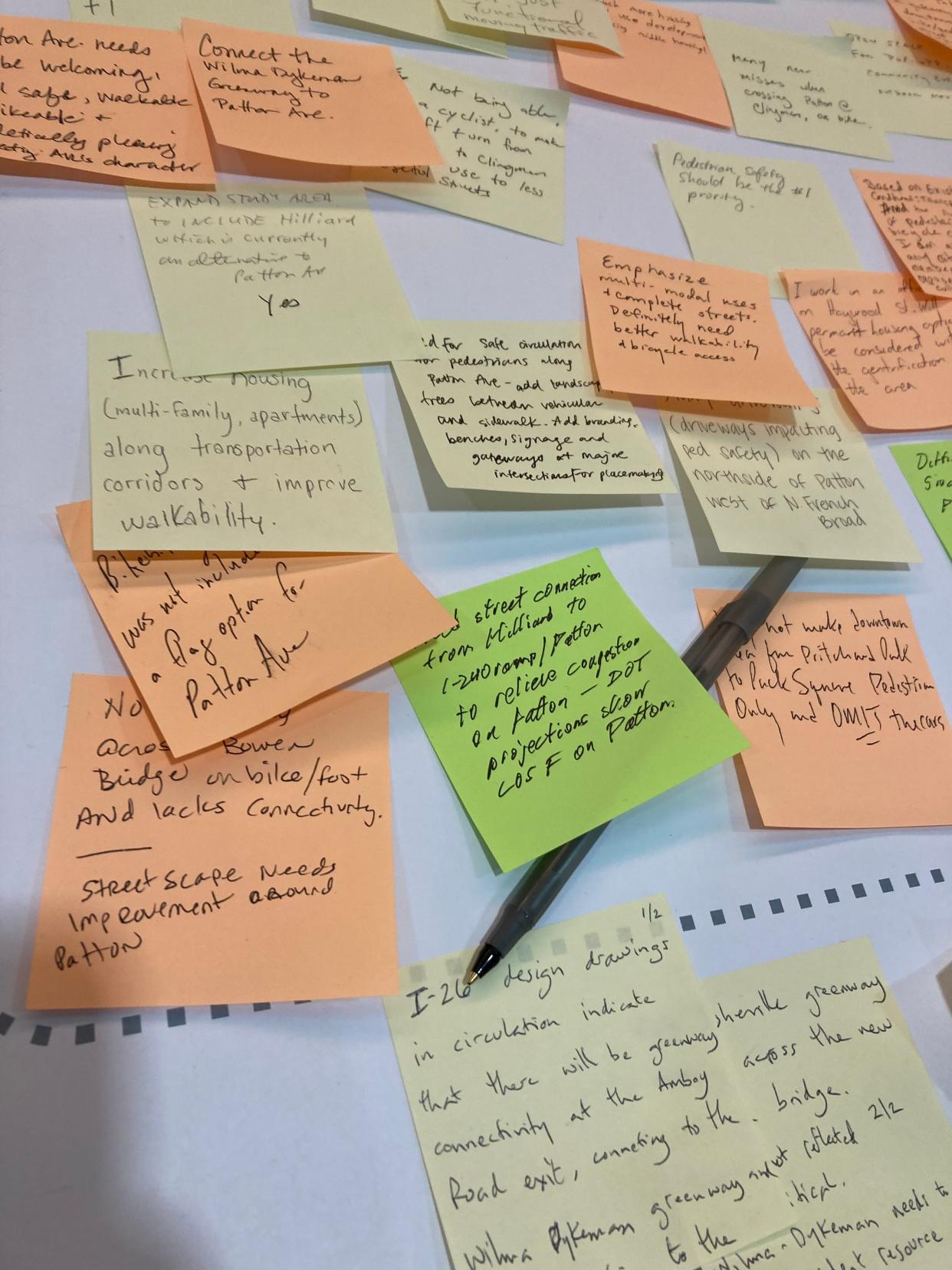
Areas that could see a major difference are those like the stretch of Patton Avenue, from Clingman to Asheland.
With empty lots, wider roadways, bigger setbacks and an overall "less urban" form, "there is an opportunity to have a conversation about what happens here," Dahl said. Farther east, where downtown is more densely developed, there's less room to make changes.
Dahl said the study should result in concepts for future capital projects. There is no funding currently set aside.
More: Asheville I-26 contract award incoming. What strategies will help protect neighborhoods?
Let's get to work
Joyell has a watercolor hanging in his office of a prospective design made in 2006 . The dream, he said, is to "extend the downtown core all the way to the river, all the way to the bridge, and present a whole new gateway for our downtown."
When he looks at it, it reminds him of the work left to do to see the vision fulfilled.
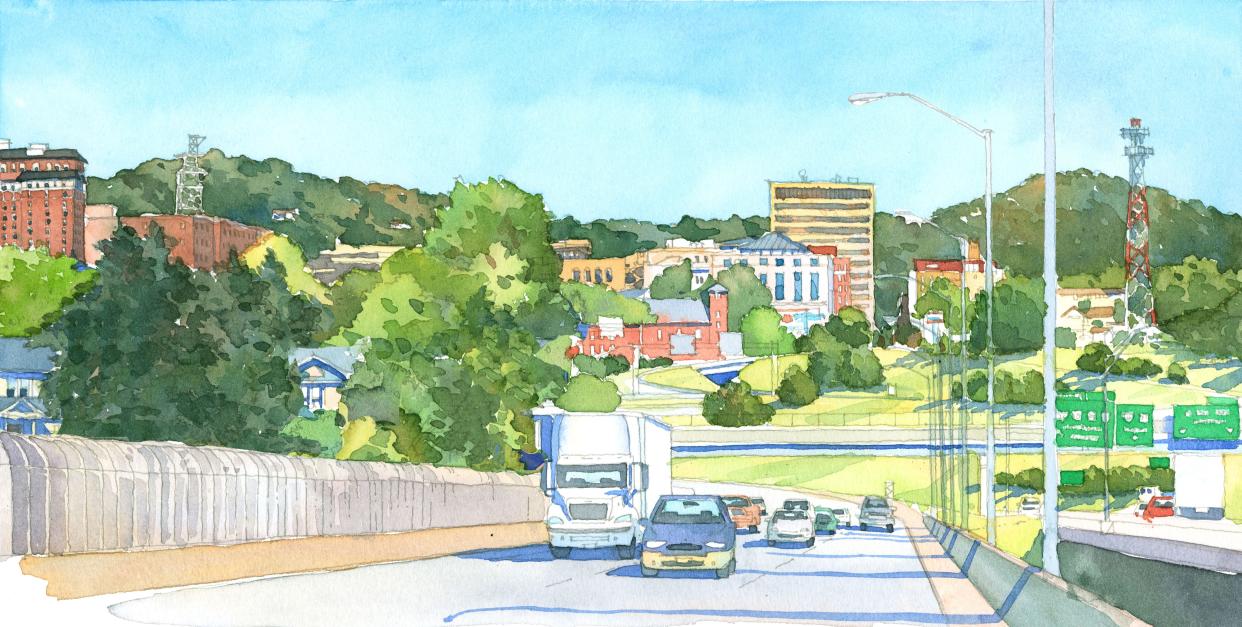
Joyell is director of healthy communities at MountainTrue, an Asheville-based environmental advocacy nonprofit, but began his work around I-26 as a volunteer with Asheville Design Center, a nonprofit founded in 2006 by designers, architects and engineers determined to come up with alternative, more community-oriented solution for the I-26 Connector.
He became executive director of Asheville Design Center in 2008 before it merged with MountainTrue in 2017.
NCDOT's current concept is different than ADC's original vision, but is a big improvement over the options on the table in the early-aughts, he said. He worries the current concept is still too concerned with flow of vehicular traffic than with other modes. Much of this hinges on travel speed. He says a slower speed than the currently proposed 35 mph, would not only would improve safety, but allow for design elements, like street trees.
"It's been 15 years of an uphill battle," he said. "I want to at least tip my hat to DOT and say they've really turned around in the last 15 years."
But he and others continue to advocate for continued changes. Less of a "suburban highway design," and more akin to what Patton Avenue is a quarter-mile up the road: retail on both sides, pedestrian crossways, improved bike and pedestrian mobility.
Hayden Plemmons, executive director of Asheville Downtown Association, also a part of the working group, said she "envisioned a future for downtown that was connected."
A "grand boulevard," she said, and strategic infill.
“I would love to see something that is very accessible to all people," Plemmons said. "A welcoming entrance into downtown."
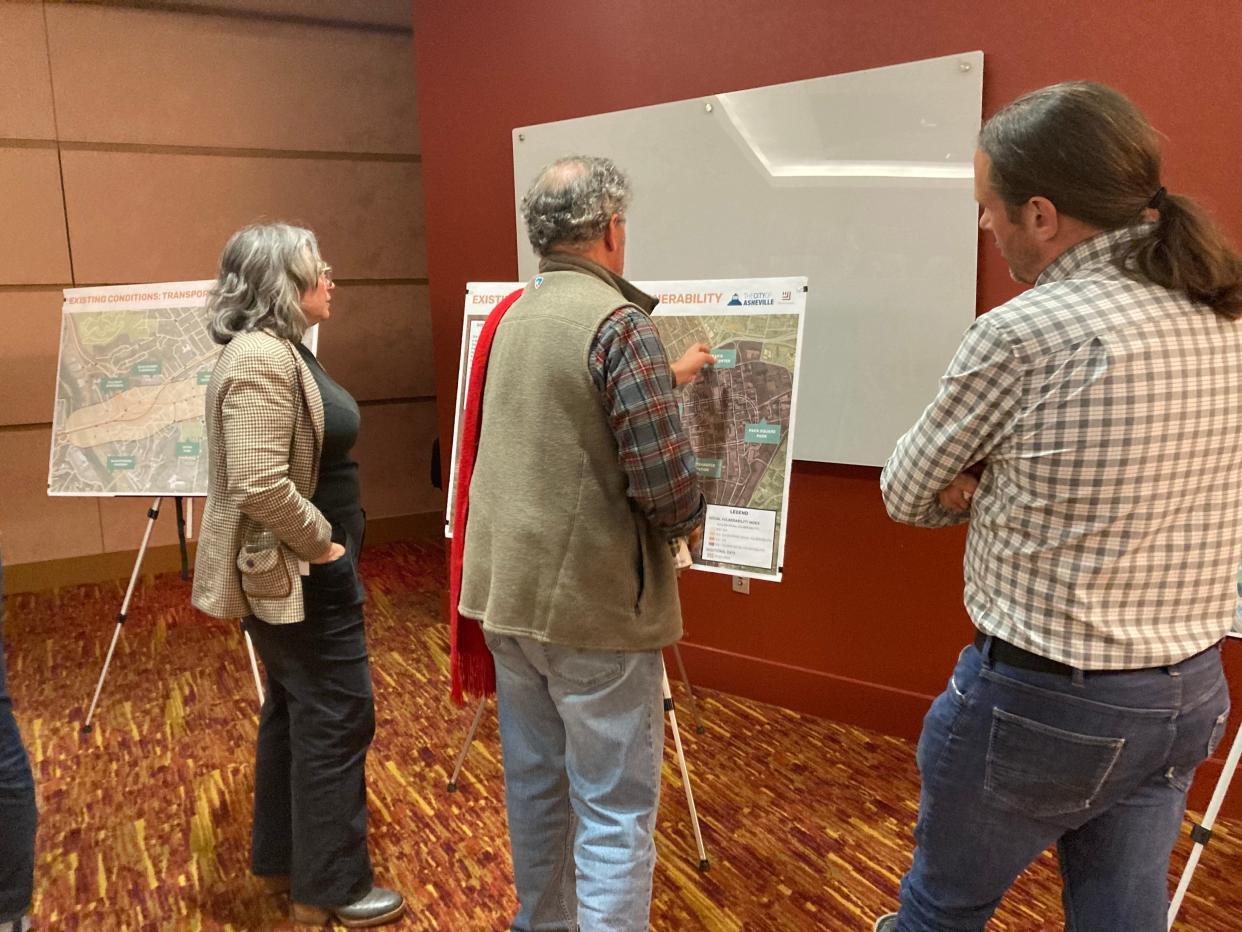
Laura Kirby, executive director of Haywood Street Congregation, which has a front-row seat to the project area, is also part of the working group, representing the other homeless services providers in the area, as well, like Salvation Army, Homeward Bound and WNC Rescue Ministries. Kirby said she was grateful to be included in the process.
With NCDOT opening bids in February, everything is "conceptual," she said, but "pedestrian safety is top of my mind."
The working group's first meeting was Nov. 29, preceding the public meeting, and Joyell said he looks forward to meeting again in January, "rolling up our sleeves," and beginning to develop concrete asks of NCDOT.
"Let's get it right the first time," he said.
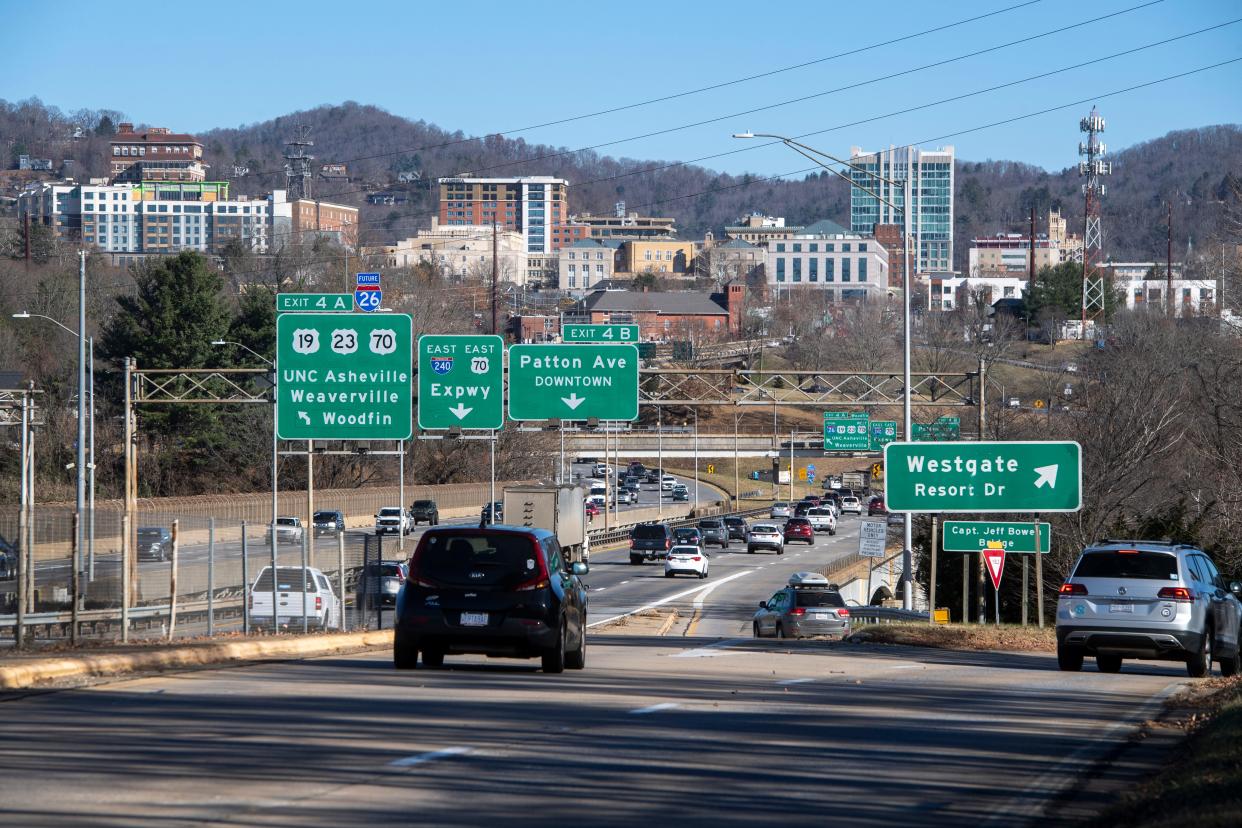
More: Answer Man: I-40 construction near Smokey Park Highway? Who won I-26 Connector contracts?
More: 'Missing middle': New study pursues more townhomes, duplexes, multiplexes in Asheville
More: Debunking homelessness myths: Asheville experts take on 5 common misconceptions
Sarah Honosky is the city government reporter for the Asheville Citizen Times, part of the USA TODAY Network. News Tips? Email shonosky@citizentimes.com or message on Twitter at @slhonosky. Please support local, daily journalism with a subscription to the Citizen Times.
This article originally appeared on Asheville Citizen Times: Asheville plans new 'western gateway' for downtown as I-26 looms
